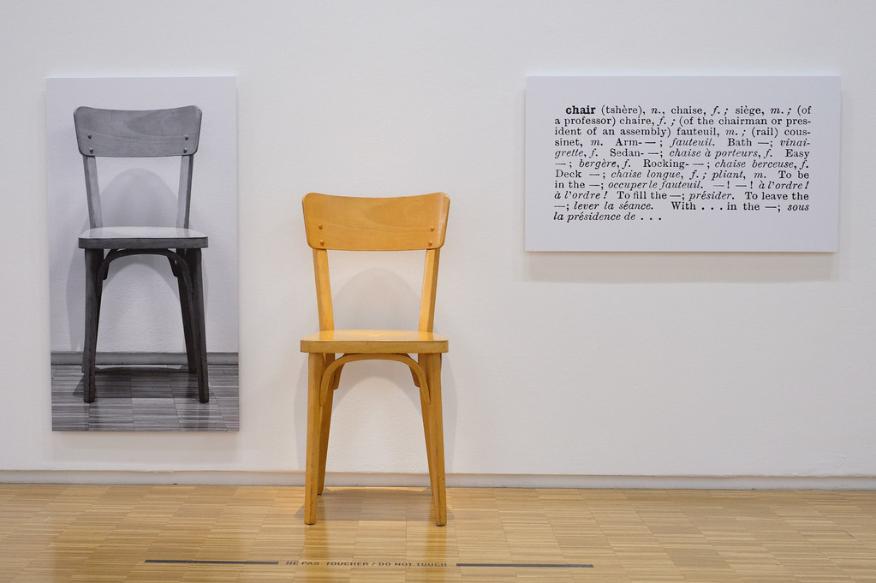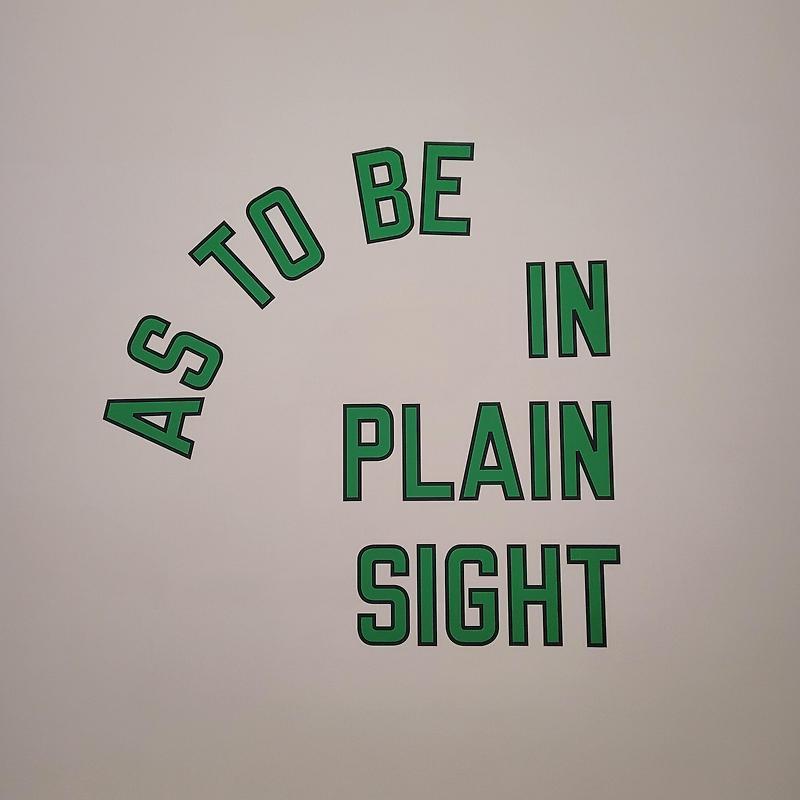Conceptual Art emerged in the 1960s as a movement that emphasized ideas and concepts over traditional aesthetic and material concerns. The movement challenges the traditional notion that the artwork must be a physical object, focusing instead on the intellectual engagement of the viewer.

Origins and Development
Conceptual Art developed as artists began to question the commodification of art and the role of the art object. It emerged from the broader context of MinimalismMinimalism is an art movement that emerged in the late 1950s and early 1960s, primarily in the United States. It is characterized by its use of simple geometric forms, clean lines, and a focus on the materiality of the work itself. Minimalist art emphasizes simplicity and seeks to strip away any unnecessary elements to reveal the essence of the artwork. More and was influenced by DadaDada was an avant-garde art movement formed in the early 20th century in Zürich in reaction to the horrors of the First World War. The Dada artists believed that the war called into question any aspect of their society including the creation of art, therefore aiming at the demolition of traditional artistic values. On this basis, a new form of More and SurrealismSurrealism was a 20th-century philosophical, literary, and artistic movement seeking to channel the unconscious to access the imaginary. Proponents of Surrealism rejected the notion of understanding life in rational and conventional terms in favour of asserting the value of the unconscious mind, dreams, the strangely beautiful, and the uncanny. André Breton, the leader of a group of poets and artists More. Marcel Duchamp’s readymades and his idea that the concept behind the work is more important than the work itself were pivotal to the development of Conceptual Art.

Key Characteristics
- Idea Over Form: The concept or idea behind the work is more important than the physical artwork itself.
- Documentation: Often, the only tangible evidence of a conceptual artwork is its documentation, such as written instructions, photographs, or sketches.
- Language and Text: Many conceptual works use language as a primary medium, incorporating text directly into the artwork.
- Ephemeral and Performative: Conceptual artworks may exist only temporarily or take the form of performances or actions.
Major Artists and Works
- Sol LeWittSol LeWitt was an influential American artist whose work helped define both Minimalism and Conceptual Art. Known for his geometric forms, wall drawings, and structures, LeWitt's work emphasized ideas and concepts over the finished product, making him a central figure in 20th-century art. Early Life and Career Sol LeWitt was born on September 9, 1928, in Hartford, Connecticut. He studied More: Considered a pioneer of Conceptual Art, his “Wall Drawings” are created according to detailed instructions, emphasizing the idea over execution. Notable works include “Wall DrawingDrawing is a foundational art form that involves creating images on a surface, typically paper, using tools such as pencils, pens, and charcoal. It is a versatile medium that allows artists to express ideas, emotions, and stories through lines, shapes, and shading. Historical Background • Prehistoric Beginnings: The earliest known drawings date back to prehistoric times, with cave drawings found More #1” (1968).
- Joseph Kosuth: His piece “One and Three Chairs” (1965) juxtaposes a chair, a photograph of the chair, and a dictionary definition of a chair, exploring the relationship between objects, images, and words.
- Lawrence WeinerLawrence Weiner is an American conceptual artist known for his text-based works that explore the relationship between language, objects, and their meaning. As a leading figure in Conceptual Art, Weiner's innovative approach has had a profound influence on the way art is created, perceived, and understood. Early Life and Career Lawrence Weiner was born on February 10, 1942, in the More: Known for his text-based works, such as “A 36″ x 36″ Removal to the Lathing or Support Wall of Plaster or Wallboard from a Wall” (1968), which consists of written instructions that can be executed by others.
- Yoko OnoYoko Ono is a Japanese multimedia artist, singer, songwriter, and peace activist known for her avant-garde art, performances, and influence on Conceptual Art and Fluxus. Her work often blurs the boundaries between art and life, emphasizing participation, instruction, and the power of imagination. Early Life and Career Yoko Ono was born on February 18, 1933, in Tokyo, Japan. She moved More: Her “Instruction Paintings,” such as “Cut Piece” (1964), involve written directions for viewers to follow, merging performance with conceptual practice.

Philosophical Influences
Conceptual Art is deeply influenced by philosophical ideas about language, perception, and the nature of art.
- Linguistic Turn: Many conceptual artists were influenced by linguistic philosophy, which focuses on the relationship between language, meaning, and understanding.
- Anti-Commodity: Conceptual Art challenges the commodification of art by emphasizing ideas over physical objects, questioning the traditional art market.
- Deconstruction: The movement often involves deconstructing the processes and conventions of art-making, revealing the underlying structures of art and meaning.

Techniques and Materials
Conceptual artists employ various techniques and materials, often choosing those that best convey their ideas.
- Text and Instructions: Written descriptions, instructions, or declarations are commonly used to communicate the concept of the work.
- Documentation: Photographs, videos, and written records often serve as the primary form of the artwork, documenting actions or ideas.
- Found Objects: Similar to Duchamp’s readymades, conceptual artists may use everyday objects to illustrate their ideas.
Influence and Legacy
Conceptual Art has had a profound impact on contemporary art, influencing various movements and practices.
- Performance Art: The focus on ideas and actions in Conceptual Art paved the way for the development of performance art.
- Installation Art: Conceptual Art’s emphasis on space and context influenced the rise of installation art, where the environment becomes part of the work.
- Contemporary Practices: Many contemporary artists continue to explore conceptual approaches, prioritizing ideas and viewer engagement over traditional aesthetic concerns.
Major Exhibitions and Collections
Conceptual Art has been featured in numerous major exhibitions and is included in prominent collections worldwide.
- The Museum of Modern Art (MoMA): New York’s MoMA has a significant collection of Conceptual Art, including works by Sol LeWittSol LeWitt was an influential American artist whose work helped define both Minimalism and Conceptual Art. Known for his geometric forms, wall drawings, and structures, LeWitt's work emphasized ideas and concepts over the finished product, making him a central figure in 20th-century art. Early Life and Career Sol LeWitt was born on September 9, 1928, in Hartford, Connecticut. He studied More, Joseph Kosuth, and Yoko OnoYoko Ono is a Japanese multimedia artist, singer, songwriter, and peace activist known for her avant-garde art, performances, and influence on Conceptual Art and Fluxus. Her work often blurs the boundaries between art and life, emphasizing participation, instruction, and the power of imagination. Early Life and Career Yoko Ono was born on February 18, 1933, in Tokyo, Japan. She moved More.
- Tate Modern: London’s Tate Modern showcases various Conceptual Art pieces, emphasizing the movement’s impact on contemporary art.
- Dia: This museum in Beacon, New York, holds extensive works by Conceptual artists like Lawrence WeinerLawrence Weiner is an American conceptual artist known for his text-based works that explore the relationship between language, objects, and their meaning. As a leading figure in Conceptual Art, Weiner's innovative approach has had a profound influence on the way art is created, perceived, and understood. Early Life and Career Lawrence Weiner was born on February 10, 1942, in the More and Sol LeWittSol LeWitt was an influential American artist whose work helped define both Minimalism and Conceptual Art. Known for his geometric forms, wall drawings, and structures, LeWitt's work emphasized ideas and concepts over the finished product, making him a central figure in 20th-century art. Early Life and Career Sol LeWitt was born on September 9, 1928, in Hartford, Connecticut. He studied More.
Conclusion
Conceptual Art remains a pivotal movement in contemporary art, celebrated for its focus on ideas and intellectual engagement. By prioritizing concepts over material form, it has expanded the possibilities of what art can be, influencing countless artists and continuing to inspire innovative approaches to art-making.
